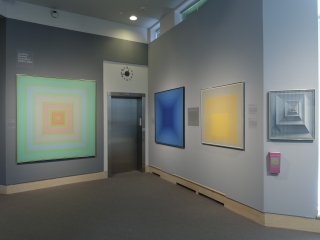Exhibitions Archive
Representations of Biblical Women from Sixteenth-Century Germany
Creating the FeminineWitness: Art and Civil Rights in the Sixties offers a focused look at painting, sculpture, graphics, and photography from a decade defined by social protest and American race relations. In observance of the fiftieth anniversary of the Civil Rights Act of 1964, this exhibition considers how sixty-six of the decade's artists, including African Americans and some of their white, Latino, Asian American, Native American, and Caribbean contemporaries, used wide-ranging aesthetic approaches to address the struggle for racial justice.
This exhibition is curated by Teresa A. Carbone, Andrew W. Mellon Curator of American Art, Brooklyn Museum, and Kellie Jones, Associate Professor in the Department of Art History and Archaeology at Columbia University.
Vehicles of Artistic Ideas
Colorful SquaresOften called “the world’s first novel,” The Tale of Genji was written in the early eleventh century by Murasaki Shikibu, the nom de plume of a woman born into the middle ranks of the aristocracy. Its complex development of character and sophisticated representation of moral and aesthetic values have made The Tale of Genji the central canonical text of one of the world’s most important literary traditions.
This exhibition of works from the Japanese collection of the Hood Museum of Art showcases representations of the eleventh-century Tale of Genji and three sequels written in the mid-nineteenth century. A handscroll and folding screen painted during the early to mid-1700s offer a sense of high-culture approaches to the novel. A selection of woodblock prints demonstrates how the novel and its sequels were reworked for popular audiences.


